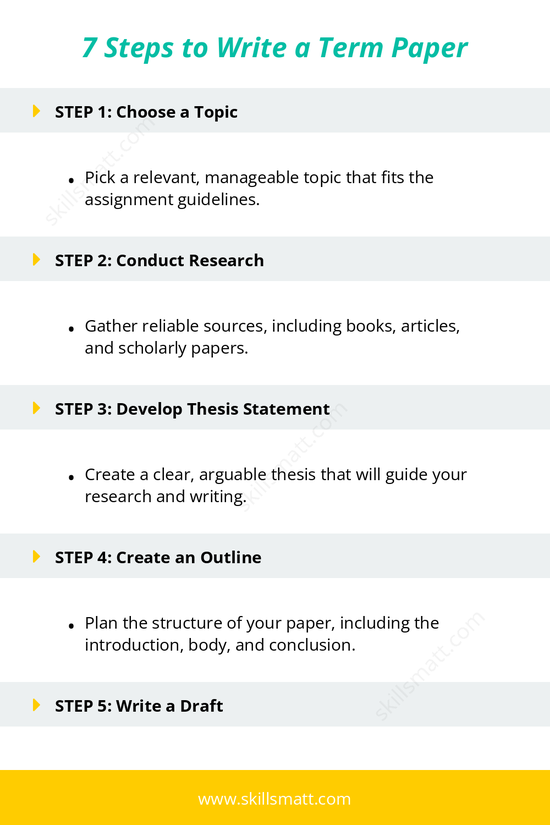7 Steps to Write a Term Paper
Writing a term paper doesn't have to be a daunting task if you approach it step by step. Below is a simple guide to help you through the entire process, from choosing your topic to submitting your final paper.
STEP 1: Choose a Topic
- Pick a relevant, manageable topic that fits the assignment guidelines: The topic you choose should align with the assignment's purpose and scope. Make sure it's something you can research thoroughly and discuss in depth within the given length of the paper.
STEP 2: Conduct Research
- Gather reliable sources, including books, articles, and scholarly papers: Use academic databases and libraries to find credible sources that are relevant to your topic. Avoid unreliable websites and focus on peer-reviewed articles or books written by experts.
STEP 3: Develop Thesis Statement
- Create a clear, arguable thesis that will guide your research and writing: Your thesis should be specific, debatable, and offer a concise summary of your argument. It will serve as the foundation for the entire paper.
STEP 4: Create an Outline
- Plan the structure of your paper, including the introduction, body, and conclusion: Organizing your ideas into sections helps ensure a logical flow of information. An outline is an essential tool to prevent you from losing focus as you write.
STEP 5: Write a Draft
- Write the first draft, focusing on content and organization, without worrying about perfection: The first draft is your chance to get all your ideas down on paper. Don't stress about making it perfect at this stage—just focus on writing.
STEP 6: Edit and Proofread
- Review your paper for clarity, coherence, grammar, and spelling mistakes: Editing is crucial for refining your ideas, improving sentence structure, and correcting errors. Don't forget to also check your citations.
STEP 7: Format Your Paper
- Ensure your paper follows the appropriate style guide (APA, MLA, etc.) and format it accordingly: Make sure your paper is properly formatted according to the guidelines provided by your instructor or the citation style you’re using (e.g., APA, MLA, Chicago).


